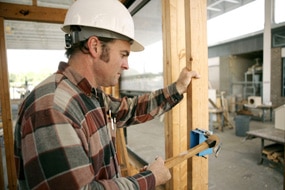Examples of Electrical Construction Defects
 The Sacramento construction defect lawyers at Kassouni Law understand many things can go wrong during the construction process which ultimately affects the value of your property.
The Sacramento construction defect lawyers at Kassouni Law understand many things can go wrong during the construction process which ultimately affects the value of your property.
Construction defects include a building’s electrical design and installation. Faulty wiring of homes is the leading cause of house fires in the United States. Safety should be the foremost concern. Faulty electrical design can be a result of, but not limited to some of the electrical issues listed below:
Non-Compliance with United States National Electrical Code:
Finding electrical code non-compliance can be daunting. In some cases, the non-compliance can be found in the set of plans drawn up by the electrical engineer. Improper implementation of the electrical engineer’s plans can present its own set of challenges. Minimally invasive ways to find non-compliance are to check the building’s breaker box and circuits, and verify that GFI outlets are in the appropriate places. More invasive methods include removing switch plates and going into walls to check for electrical construction defects. If one suspects faulty electrical construction, more invasive methods may be in order to ensure safety to the building occupants.
Poorly designed circuits and Faulty Breaker Boxes:
Each electrical circuit found in a building must be capable of supporting a number of electrical devices and appliances. Therefore, it is important that the electrical loads throughout the building are equally distributed on circuits feeding into the breaker box. If the circuitry in a building is poorly designed with too much strain on any one circuit, a frequent trip to the breaker box may be required every time a larger appliance is turned on within this circuit (such as the air conditioning unit). The breaker box and its fuses serve as the mechanism to prevent real electrical danger in a home. When the circuit becomes overloaded and the breaker box is tripped to off, it prevents the wiring within the home from melting and catching fire.
A simple observation of the breaker box can be the first clue to determining defective electrical construction or design. Check the input side of the breaker to verify the amount of power the building is capable of drawing. Next, verify an ample number of circuits running into the box. The greater number of circuits, and the bigger they are, the less likely the building will have defective electrical design. Finally, it is good practice to hire a licensed electrician to confirm that no electrical problems exist within the building.
Improper Grounding:
The grounding of building electrical wires is required by Article 250 in the United States National electrical code. Properly designed, the ground wire leads back to the electrical neutral at the building’s electrical service panel, ultimately preventing electrical shock to the building’s inhabitants. It is difficult to tell if a building has been properly grounded electrically. If you have any concerns, inspection by a licensed electrician may be in order.
Improper Electrical Installation:
There are many signs that your building or home may be subject to faulty electrical installation including the absence of GFI outlets within nine feet of a water source, exposed wire either through improper connections, electrical tape used in place of wire nuts, lack of a connecting ground wire at junctions, and many more.
With over 30 years in combined legal experience the Sacramento construction defect lawyers at Kassouni Law tirelessly litigate for clients with construction-defect cases. Managing attorney Timothy Kassouni has negotiated the settlement of multi-million dollar construction cases. If you have a question about construction defect litigation, call the Sacramento and Los Angeles offices of Kassouni Law at (877) 770-7379.

